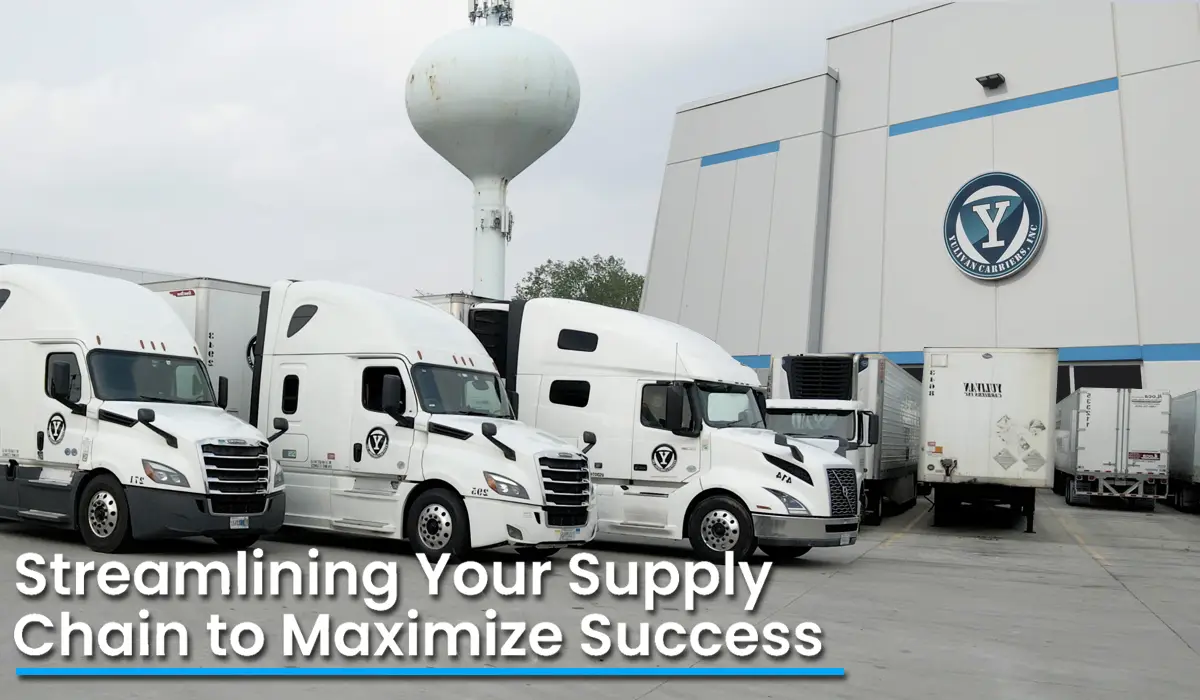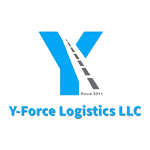
Effective Strategies For Supply Chain Management
Proven Methods For Managing The Supply Chain
In a world where every minute counts, having a supply chain that’s not just reliable but resilient is what sets successful businesses apart. At Y Force Logistics LLC, we’re dedicated to building supply chains that can withstand any challenge, adapt quickly to change, and keep your business moving forward, no matter what. Our expertise in effective supply chain management ensures that your goods are always where they need to be, when they need to be there. Curious about crafting a bulletproof strategy for your logistics needs? Dive into our suite of services at Y Force Logistics LLC, or get the conversation started at (800) 707-6575. Ready for a seamless, stress-free logistics experience? Request a free quote today and see how we turn challenges into opportunities.
Understanding The Supply Chain Management Process Flow
Mapping the Process: The journey of products from raw materials to the end-user is intricate and requires meticulous planning and execution. This journey, known as the supply chain management process flow, includes several key stages: sourcing of materials, production, inventory management, transportation, and distribution, followed by customer delivery and service. Each stage is interconnected, and efficiency at one point can significantly impact the next.
At the heart of effective supply chain management is a deep understanding of this process flow. By mapping out each step, we can visualize the entire supply chain, identify areas for improvement, and implement strategies to optimize operations. This mapping involves analyzing the roles of suppliers, manufacturers, distributors, and retailers and how they work together to deliver products to consumers. It also includes understanding the logistics behind moving materials and goods, from storage conditions to transportation modes and routes.
Identifying Bottlenecks: Once the supply chain is mapped out, the next critical step is to identify bottlenecks—points in the process where delays or inefficiencies occur. Bottlenecks can arise from a variety of sources, such as supplier delays, production issues, inventory mismanagement, or transportation setbacks. These bottlenecks not only slow down the supply chain but can also lead to increased costs, reduced quality, and lower customer satisfaction.
Finding bottlenecks requires that the supply chain process be constantly watched and analyzed. For example, this could mean keeping track of production times, inventory levels, shipping schedules, and delivery dates. With real-time data and insights that help identify where delays are occurring, advanced analytics and supply chain management software can be invaluable tools in this endeavor.
Once bottlenecks have been found, they need to be fixed. Some possible solutions are adjusting inventory levels to avoid having too much or too little, streamlining production processes, improving relationships with suppliers to make sure materials arrive on time, or looking into other transportation routes or methods to avoid delays. The objective is to build a supply chain that works better and more smoothly, one that can handle problems and meet market needs.
Effective supply chain management, in essence, requires an understanding of how the process works and the ability to spot bottlenecks. They help businesses improve their operations, become more efficient, and give their customers more value. Businesses can turn their supply chain into a strategic asset that helps them grow and be more competitive by carefully mapping and analyzing it.
Leveraging Technology In Supply Chain Management
The integration of technology into supply chain management has become a cornerstone for achieving operational excellence and competitive advantage. Here’s how technology is reshaping the landscape:
1. Advanced Analytics And Big Data
- Insightful Decision-Making: Utilizing big data analytics, businesses can extract meaningful insights from vast amounts of data, improving decision-making processes. This can lead to more accurate demand forecasting, inventory optimization, and risk management.
- Predictive Analytics: By analyzing trends and patterns, companies can predict future supply chain disruptions and customer demand, allowing for proactive adjustments to strategies.
2. Internet Of Things (IoT)
- Real-Time Tracking: IoT devices enable the tracking of products in real-time throughout the supply chain. This visibility helps in managing inventory levels accurately and identifying potential delays or issues as they happen.
- Enhanced Efficiency: Sensors and smart devices can monitor the condition of goods in transit, ensuring temperature-sensitive products are stored correctly, reducing waste, and improving product quality.
3. Blockchain Technology
- Increased Transparency and Security: Blockchain creates a secure, immutable ledger of transactions that enhances transparency across the supply chain. It ensures that all parties have access to the same information, reducing disputes and building trust.
- Streamlined Operations: By automating contracts and payments with smart contracts, blockchain technology can streamline operations and reduce processing times for documentation and compliance.
4. Artificial Intelligence (AI) And Machine Learning
- Automated Decision Processes: AI and machine learning algorithms can automate complex decision-making processes, such as route optimization and supplier selection, based on historical data and current market conditions.
- Enhanced Customer Experience: AI-driven chatbots and service platforms can provide customers with instant updates and information regarding their orders, improving service levels and satisfaction.
5. Cloud Computing
- Scalability and Flexibility: Cloud-based supply chain solutions offer scalability and flexibility, allowing businesses to adjust their resources according to demand fluctuations without significant upfront investments in IT infrastructure.
- Collaboration and Integration: Cloud platforms facilitate easier collaboration between different stakeholders in the supply chain, from suppliers to customers, ensuring that information flows smoothly and operations are synchronized.
6. Robotics And Automation
- Increased Productivity: In warehousing and distribution centers, robotics and automated systems can significantly increase productivity, accuracy, and safety, reducing the reliance on manual labor and speeding up order processing times.
- Customization and Scalability: Automation technology is increasingly adaptable, able to handle tasks from packing and picking to loading, allowing for customization according to specific operational needs.
Leveraging technology in supply chain management is not just about adopting new tools; it’s about fundamentally transforming operations to be more efficient, resilient, and customer-focused. As technology continues to evolve, staying ahead means continuously exploring and integrating these innovations into supply chain strategies. This proactive approach ensures that businesses can meet the challenges of today’s dynamic market environment and capitalize on new opportunities for growth and efficiency.

Best Practices In Logistics And Supply Chain Management
Integration of Logistics
Integrating logistics and supply chain management effectively means breaking down silos and ensuring that every component of the supply chain is aligned and coordinated. Our expertise in logistics allows us to create seamless operations that improve overall efficiency and responsiveness.
Relationship Management
Strong relationships with suppliers and logistics partners are essential for a resilient supply chain. We prioritize building and maintaining these relationships, ensuring that we can rely on our network to support our clients’ needs, even in challenging times.
Strategies For Enhancing Supply Chain Resilience
Building a resilient supply chain is essential for maintaining business continuity and a competitive edge in an era of rapid change and unforeseen disruptions. Here are key strategies for enhancing supply chain resilience:
1. Diversification Of Suppliers
- Risk Mitigation: Reducing dependency on a single supplier or region for critical components or materials can mitigate risks associated with supply chain disruptions. Diversifying suppliers across different geographical locations ensures that a blockade or failure in one region does not halt the entire supply chain.
- Strategic Sourcing: Implementing a multi-sourcing strategy involves identifying and qualifying alternative suppliers for key products or services. This requires rigorous vetting for quality, capacity, and reliability to ensure they meet business standards.
2. Enhanced Visibility Across The Supply Chain
- Real-time Monitoring: Investing in technologies that provide real-time visibility into the supply chain allows businesses to monitor the flow of goods and materials. This enables early detection of potential issues and swift response to minimize impact.
- Collaborative Platforms: Utilizing platforms that facilitate information sharing among all stakeholders, from suppliers to customers, enhances transparency and collaboration, making it easier to anticipate and manage risks.
3. Inventory Management Strategies
- Safety Stock and Buffer Inventory: Maintaining a strategic level of safety stock or buffer inventory for critical items can protect against fluctuations in supply and demand, ensuring that production lines continue running smoothly during disruptions.
- Demand Forecasting and Planning: Advanced forecasting tools that incorporate market trends, historical data, and predictive analytics help in making informed decisions about inventory levels, reducing the risks of overstocking or stockouts.
4. Agile And Flexible Operations
- Modular Process Design: Designing operations to be modular allows for quick adjustments and reconfigurations in response to changing market conditions or disruptions.
- Flexible Manufacturing Systems: Implementing flexible manufacturing systems that can quickly switch between products or adjust production volumes helps respond to fluctuations in demand or supply chain interruptions.
5. Strengthening Relationships With Key Stakeholder
- Partnership with Suppliers: Building strong relationships with key suppliers involves regular communication, collaborative planning, and mutual support initiatives. This ensures that suppliers are more responsive and committed during times of need.
- Customer Engagement: Keeping customers informed about potential delays or issues and working proactively to address their concerns builds trust and loyalty, which is crucial during challenging times.
6. Robust Risk Management And Contingency Planning
- Comprehensive Risk Assessment: Conducting regular and thorough risk assessments to identify vulnerabilities within the supply chain is essential. This includes evaluating the risk of natural disasters, geopolitical issues, market fluctuations, and supplier stability.
- Developing Contingency Plans: Having well-defined contingency plans in place for various risk scenarios ensures that the business can react quickly and effectively. This includes alternate routes for logistics, backup suppliers, and emergency response strategies.
Enhancing supply chain resilience is an ongoing process that requires a strategic approach to risk management, operational flexibility, and stakeholder collaboration. By implementing these strategies, businesses can not only withstand disruptions but also adapt and thrive in an ever-changing global market. Building a resilient supply chain is not just about safeguarding against risks; it’s about creating a robust foundation that supports sustainable growth and innovation.
Measuring And Improving Supply Chain Performance
Key Performance Indicators (KPIs)
We use a range of KPIs to measure the health and performance of our supply chains. These metrics help us track efficiency, cost-effectiveness, and customer satisfaction, guiding our efforts to continuously improve our services.
Continuous Improvement
Our commitment to continuous improvement means we’re always looking for ways to make our supply chain management processes better. Through regular reviews and the adoption of best practices, we strive to deliver unparalleled value to our clients.
Building Resilience: The Future Of Your Supply Chain With Y Force Logistics
As we’ve navigated through the strategies for enhancing supply chain resilience, it’s clear that the right approach and the right partner make all the difference. Y Force Logistics LLC stands at the forefront of innovative logistics solutions, armed with the technology and expertise to keep your supply chain not just running but thriving, even in the face of unpredictability.
With a commitment to effective supply chain management, we’re here to ensure that your business is equipped for today’s challenges and tomorrow’s opportunities. Ready to elevate your supply chain resilience? Reach out to us at (800) 707-6575 or visit our contact page. Let Y-Force Logistics LLC be the partner that drives your success, helping you navigate the complexities of modern logistics with confidence and ease.

